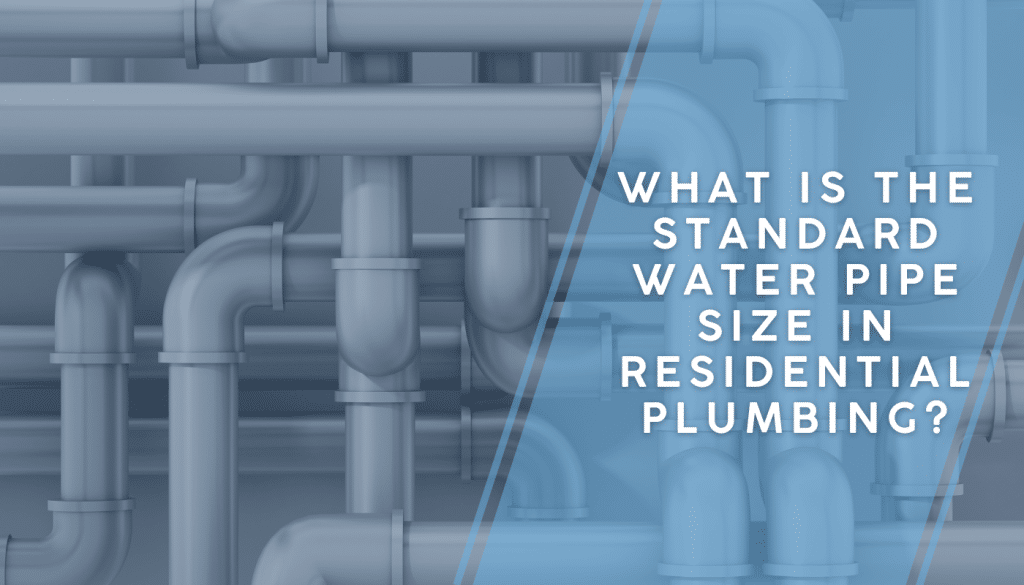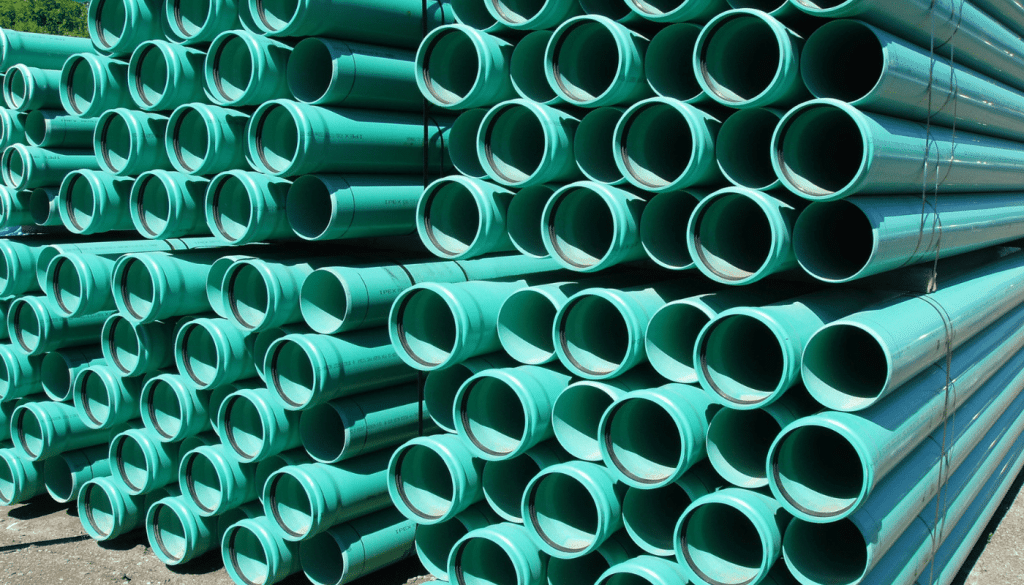
When planning or upgrading a home’s plumbing system, choosing the right pipe size is critical. Using the correct water pipe size ensures efficient water flow, prevents pressure issues, and extends the lifespan of your plumbing system. But what is standard water pipe size in residential plumbing? In this guide, we will break down everything you need to know, from standard pipe sizes to factors affecting sizing, material choices, and signs that your home may have inadequate pipe sizes.
Importance of Correct Pipe Sizing
Selecting the right water pipe size plays a crucial role in ensuring:
- Optimal Water Pressure: Pipes that are too small can cause low water pressure, while oversized pipes can lead to inconsistent flow.
- Adequate Water Volume: Ensuring that enough water reaches all fixtures simultaneously.
- Energy Efficiency: The right size pipe reduces the work needed for water to move through the system, improving efficiency.
- Compliance with Plumbing Codes: Using the correct pipe size keeps your home in compliance with local building regulations.
How Water Pipe Size Impacts Pressure, Volume, and Efficiency
Water pressure and volume depend on the pipe size and length. Smaller pipes restrict flow and create pressure drops, while larger pipes provide better volume distribution. However, oversized pipes can cause fluctuations in pressure, especially on higher floors of a home. Proper pipe sizing ensures balanced flow throughout the house, avoiding inefficiencies or costly fixes.
Factors That Determine Residential Water Pipe Size
Several factors influence the correct pipe size for your home:
Fixture Unit Count
Each plumbing fixture requires a certain amount of water flow, measured in fixture units. The total number of fixture units in your home determines the required pipe size.
Pipe Length and Its Effect on Water Flow and Pressure
Longer pipe runs create more resistance, which can reduce pressure. Pipes carrying water to upper floors or long distances should be sized correctly to maintain steady pressure.
Local Plumbing Codes and Regulations
Local building codes outline specific guidelines for pipe sizes to ensure compliance. These codes help determine the minimum pipe diameter for main supply lines and fixture supply lines.
Water Pressure Considerations
If your home has low water pressure from the municipal supply, choosing the right pipe size can help mitigate issues. A plumber can assess pressure levels and recommend adjustments to pipe diameter to optimize flow.
Common Residential Water Pipe Sizes
Standard water pipe sizes vary based on their function within the home:
- Main Water Line from the Street: ¾” or 1” in diameter
- Supply Lines to Fixtures: ½” or ¾”
- Individual Fixture Connections: 3/8” to ½”
Water Pipe Sizing Chart for Residential Fixtures
| Fixture or Appliance | Cold Water Pipe Size | Hot Water Pipe Size |
|---|---|---|
| Toilet | 3/8” | – |
| Bathtub | ½” | ½” |
| Bathroom Sink | 3/8” | 3/8” |
| Shower | ½” | ½” |
| Kitchen Sink | ½” | ½” |
| Dishwasher | 3/8” to ½” | 3/8” to ½” |
| Washing Machine | ½” | ½” |
| Laundry Sink | ½” | ½” |
| Water Heater | ¾” | – |
How Pipe Length Affects Water Flow and Pressure
- Water pressure decreases by 0.5 psi for every foot of vertical rise.
- Pipes for upper-floor fixtures may need to be one size larger than ground-level pipes.
- Longer runs may require a larger diameter to prevent excessive pressure drops.
Pipe Material and Its Role in Water Supply Line Sizing
The material of the pipe affects its longevity, installation process, and water pressure:
- PEX Pipes: Flexible, easy to install, but requires proper support.
- PVC Pipes: Used for drainage and venting, not ideal for water supply.
- Copper Pipes: Durable, heat-resistant, but expensive and requires soldering.
- ABS Pipes: Strong, used for drains, but not recommended for potable water.
- Galvanized Steel & Cast Iron: Found in older homes, prone to rust, and typically replaced.
The Relationship Between Pipe Size and Water Volume
- A 1-inch pipe carries about 56% more water than a ¾-inch pipe.
- Larger pipes prevent pressure drops when multiple fixtures are in use.
- Small pipe size increases wear and tear, reducing efficiency.
- Understanding what is standard water pipe size in residential plumbing helps homeowners choose the best system for their needs.
Signs Your Home’s Water Pipe Size Is Inadequate
- Water pressure drops when multiple fixtures are in use.
- Water temperature fluctuates while using different appliances.
- Slow water flow from taps or showerheads.
- Homeowners wondering what is standard water pipe size in residential plumbing should check their system for these common issues.

Choosing the Right Pipe Size for Home Plumbing Projects
- Replacing old pipes? Match existing sizes unless upgrading for better flow.
- Consult local plumbing codes for compliance.
- Hire a professional plumber to ensure accurate sizing and installation.
- Always verify what is standard water pipe size in residential homes before making changes.
The correct water pipe size is essential for efficiency, pressure maintenance, and compliance. Whether you’re installing a new plumbing system or upgrading an existing one, proper sizing prevents costly issues in the future. If you’re unsure what is standard water pipe size in residential plumbing, consult a professional for guidance.
Contact Barney’s Plumbing & Sewer Services
At Barney’s Plumbing & Sewer Services, we are committed to providing expert plumbing solutions tailored to your home’s specific needs. Our team ensures that your water supply system is installed correctly and efficiently.
Why Choose Us?
- Licensed and Insured: We carry a plumbing license (#BARNEP*788JE) and contractor’s license (#BARNEPS804D3).
- Customer Satisfaction Guarantee: We don’t consider the job done until you’re completely satisfied.
- Affordable Pricing: We offer discounts for military personnel, seniors, and first responders.
- Commitment to Safety: Our team follows strict safety measures for secure and efficient service.
Call Us Today! (253) 498-5434 for expert plumbing services!

